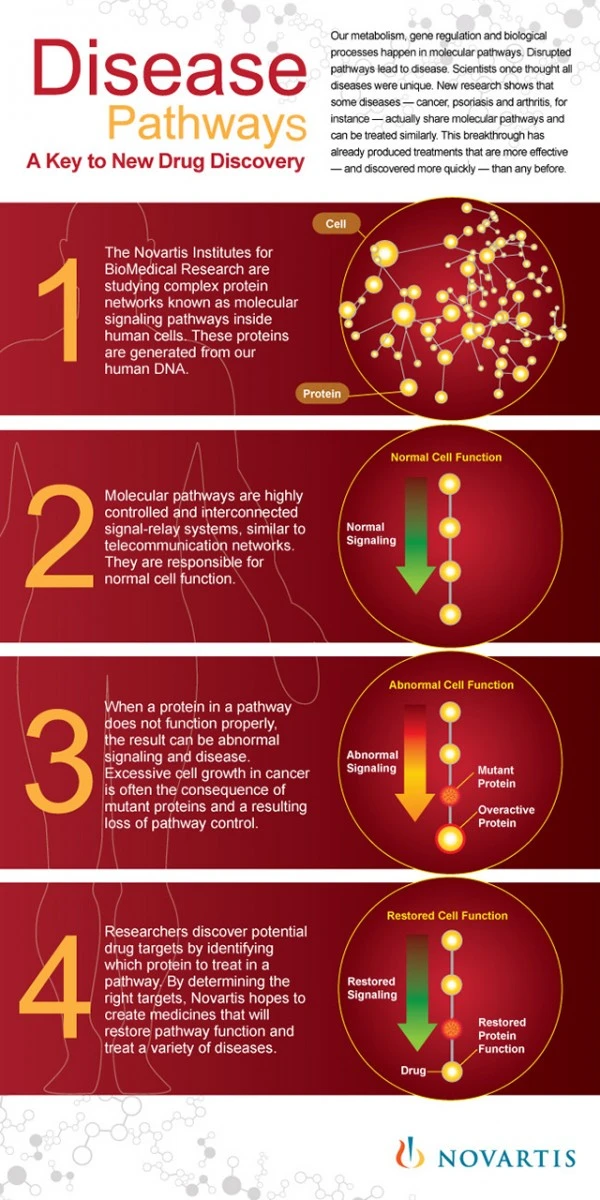As recently as a decade ago, many scientists and physicians were unaware of the connections between seemingly disparate diseases. Osteoporosis and cancer, for example, were considered completely unrelated. But it turns out they sometimes share similarities at a molecular level.

Using new technologies, researchers have developed a deeper understanding of how cells function, changing conceptions of disease. They’re mapping the complex network of molecular pathways that control a cell’s activities. Each pathway includes many players that interact. A series of signals, from one molecule to another, triggers particular actions — the production of a protein, for example, or cell division. Defects in a pathway can cause disease.
The latest maps of molecular interactions reveal connections between diseases that seem very different. A molecule linked to bone loss, for example, appears in the same pathway as a molecule associated with certain types of cancer. In fact, a relatively small number of core pathways play a fundamental role in development — and in disease. Researchers at the Novartis Institutes for BioMedical Research (NIBR) focus on these key pathways, searching for ways to maintain or restore their function to treat a variety of conditions.
Identifying the location of the pathway disruption is a first step toward developing new medicines. Then scientists need to figure out how to fix the problem. This approach has already produced more effective treatments for diseases such as multiple sclerosis and chronic myelogenous leukemia, but there are still many more opportunities to explore.
NIBR researchers continue to work to unravel how complex pathways are structured in order to find ways to intervene in disease. Although the course of each pathway is intricate and requires insights from multiple disciplines, a complete understanding of pathways and the roles they play within cells and the human body could help deliver profound results that could provide important therapies for some of the world’s most deadly and difficult-to-treat diseases.



